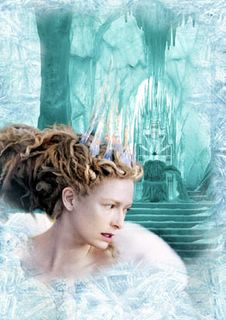
C.S. Lewis demanded that a person should not believe in Christianity before being convinced of its truthfulness. He once described himself by saying “I am an empirical Christian, I came to Christ through induction.”
Appeal to Imagination
But Lewis was not all argument, logic, and evidences. Another side of Lewis the apologist exists – the imaginative Lewis – which sets him apart in the genre of apologetics. Lewis believed that while apologists might reach people through argument, Christianity can also be conveyed imaginatively. He contended that our great need is not “more little books on Christianity, but more little books by Christians on other subjects – with their Christianity latent.” If the writer presents a story with Christianity providing its underlying meaning instead of relativism, hedonism, and materialism as its primary interpretive framework, the reader would be challenged to think of all things differently.
Here is a history of Narnia. Narnia story as evangelistic resource.
More on Narnia from David Tan, Justin, Colson, BK and Leon















4 comments:
Can anyone explain to me Lewis' concept of myth and allegory? Or at least, show me to a good book (by Lewis himself would be best) on the matter.
The best book to read is his own "The Allegory of Love", an influential piece of literary criticism which explores the notion of courtly love in medieval literature, and covering how allegorical narrative works in that time period.
I haven't read it myself, although lots of later criticism is either influenced by or reacts against his piece, so I have a little inkling of it from that. His notions of allegory and myth seems to have Romantic overtones; for Lewis, a man puts into allegory what he already knows. A myth is "better", for it's transcendent, for a man puts into it what he does not know, but which he cannot come by any other way.
I think his conception of allegory is, by and large, the standard conception, i.e. that it's an extended metaphor where objects, actions, or persons are equated with meanings outside the narrative itself, usually moral, social, religious or political. (though obviously, this can become complicated since the equivalence theory doesn't neatly fit in with lots of allegories.) And also putting immaterial facts, eg. feelings, into visible forms.
He also distinguished between allegory and symbol. Whereas allegory is about putting what is immaterial (emotions etc.) into material form, it is possible that our material world is itself a copy of an invisible world, a "symbol". Whereas the allegorist goes in search of the "less real" (i.e. moving into the realm of fiction, so moving a step away from the "real world", the symbolist goes in search of the "more real". (Also has neo-Platonic overtones here!). Think of his ideas in "The Weight of Glory", there aren't too dissimilar here.
It's worth noting that Lewis himself said that he didn't consciously think of his allegorical theories when he was writing Narnia and trying to impose his model unto them. Although I think, the ending scenes of the Last Battle do are quite telling.
Hope my waffling helps a little. :)
thanks BK, I guess what I still dont understand is why Lewis argues that Narnia is not an allegory. Thanks for the lead, will try to get my hands on it and the compilation of his letters.
No prob.
The head honcho over at the Thinklings has made life easier for us by posting on CS Lewis and Allegory. Definitely worth a read.
Post a Comment